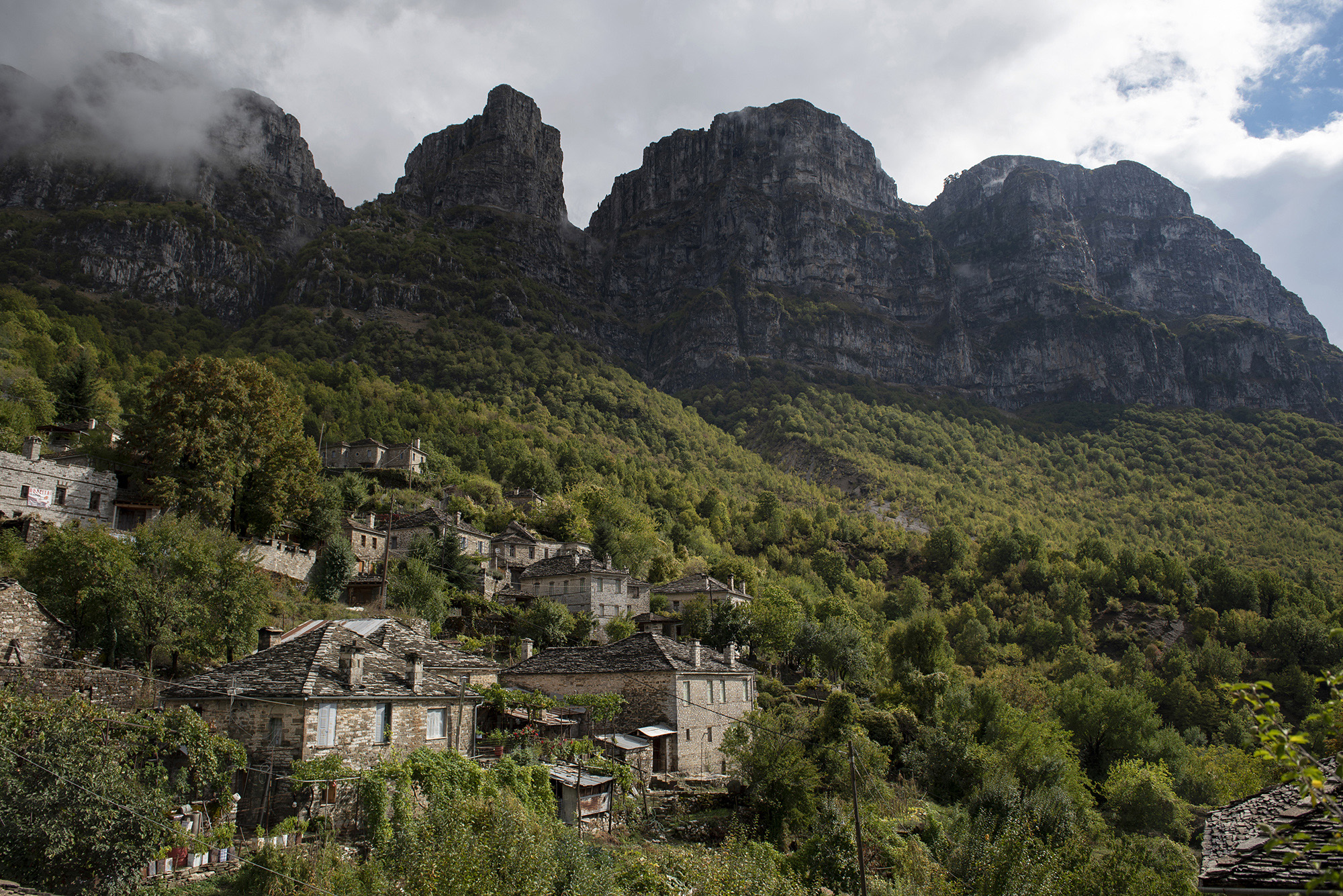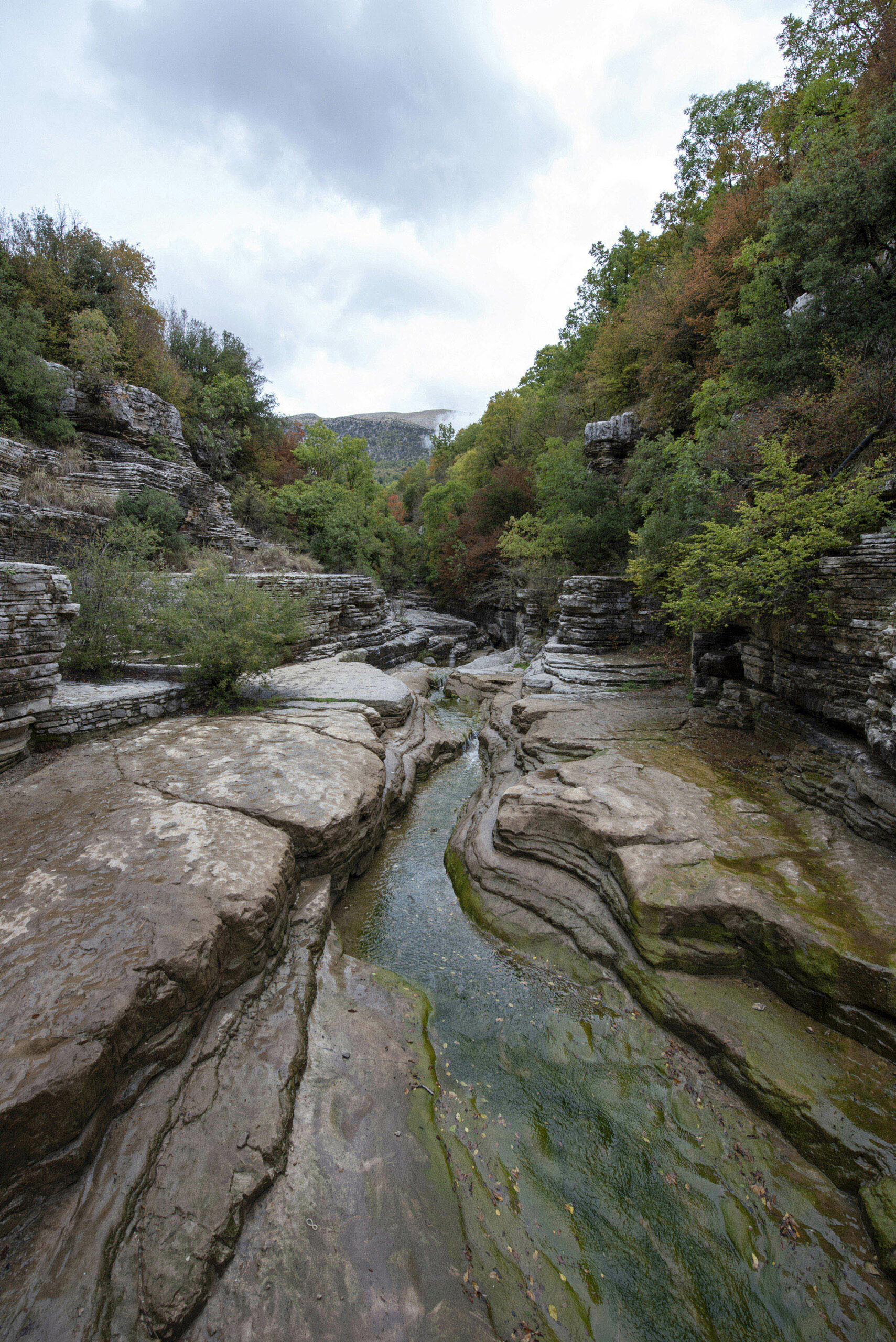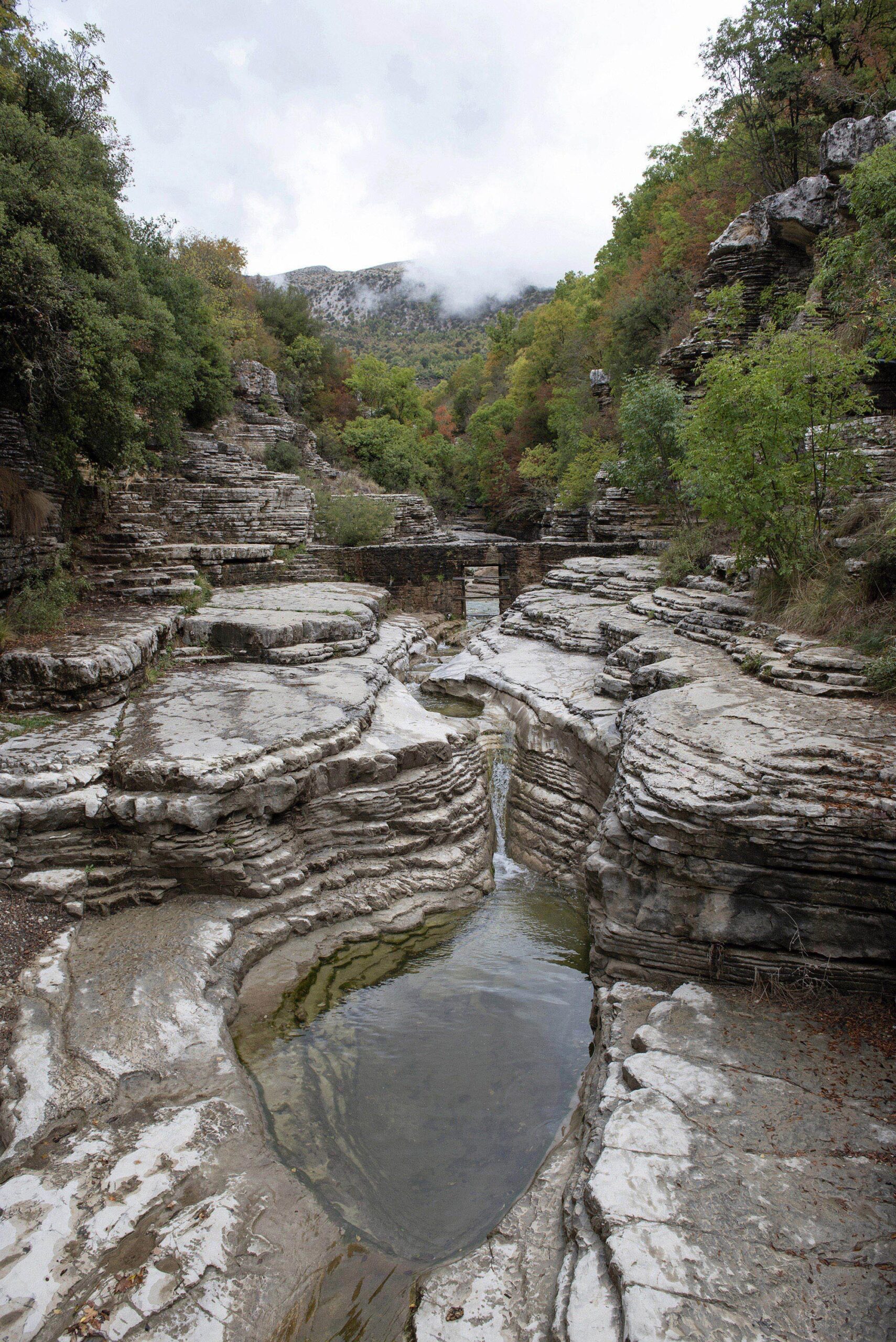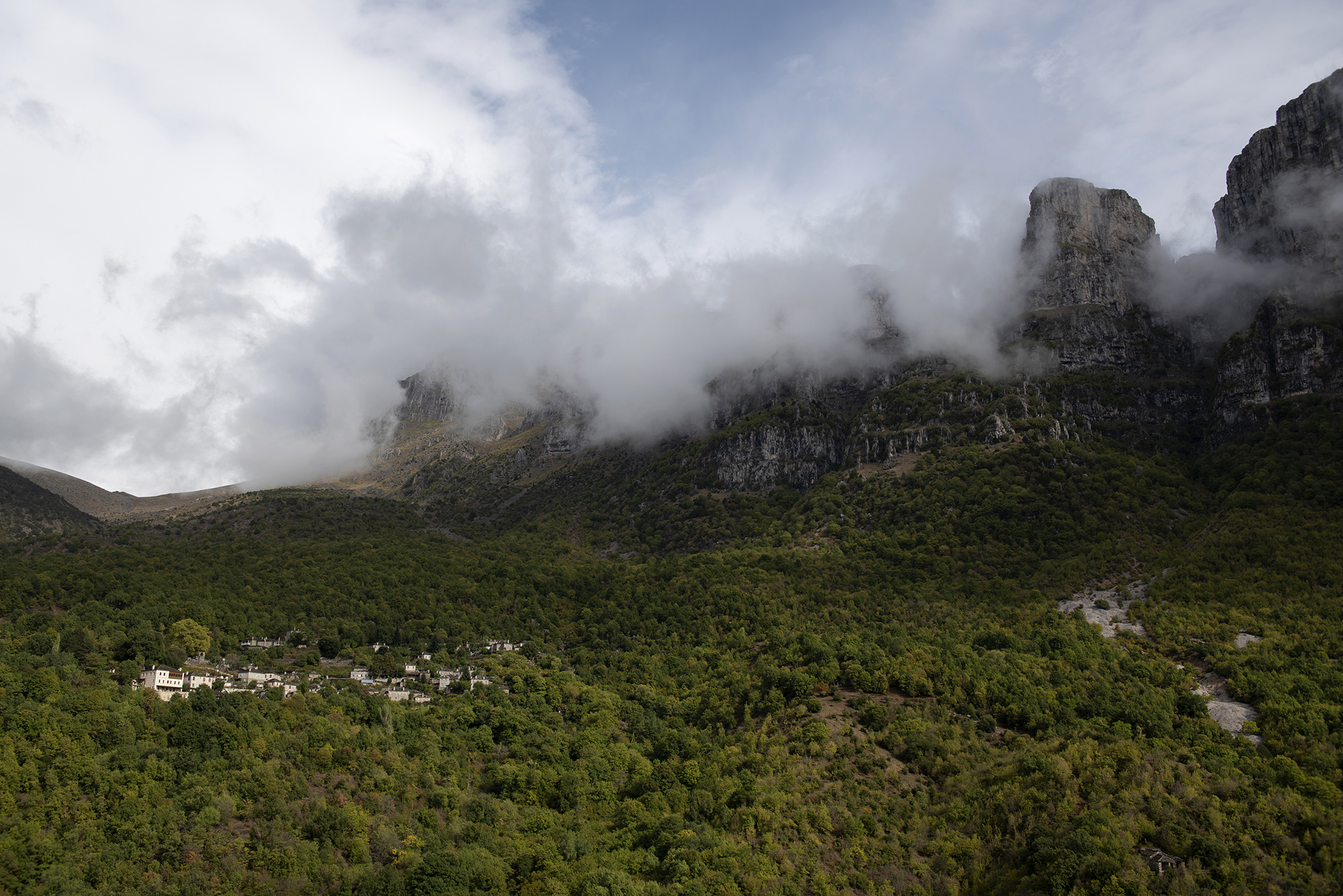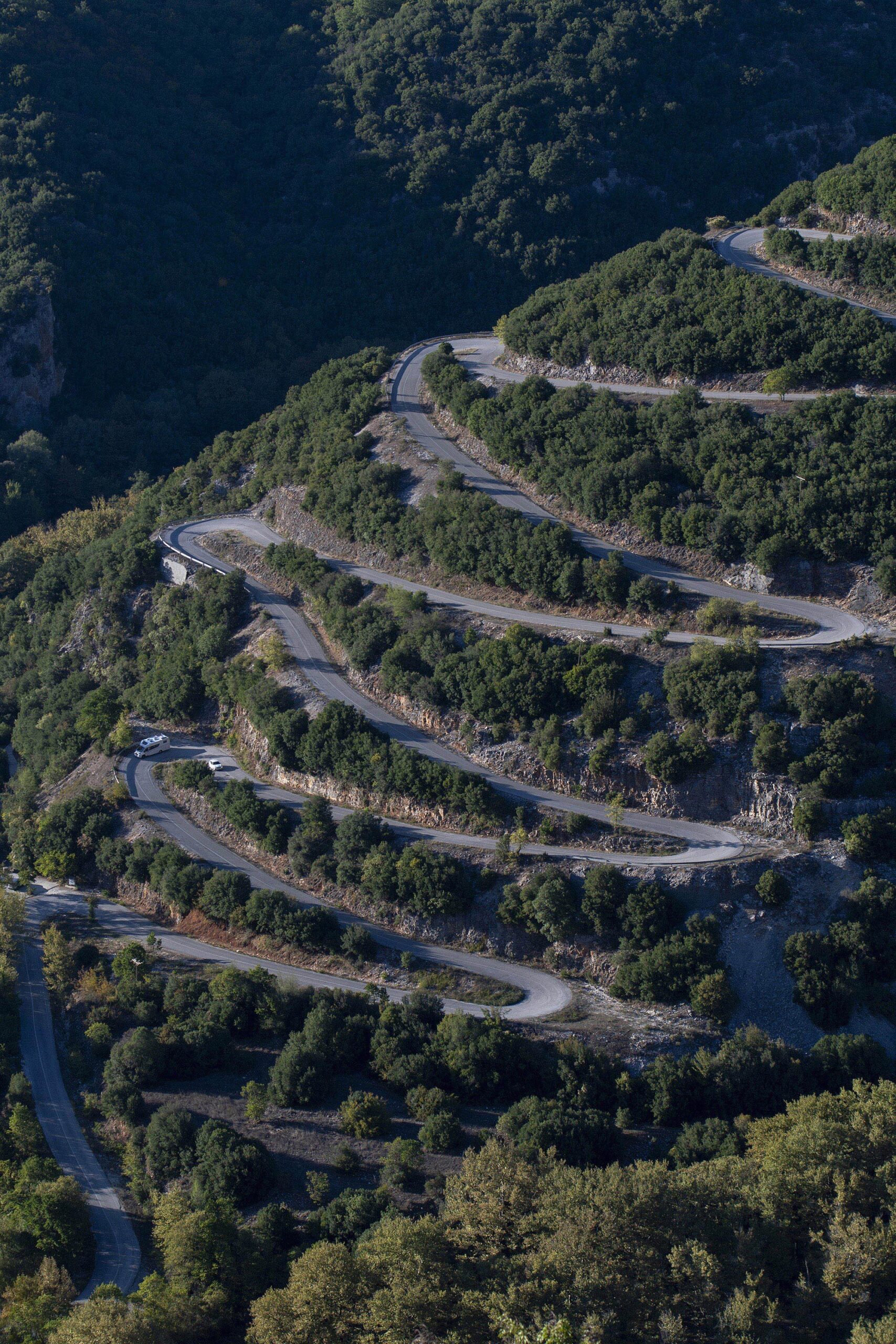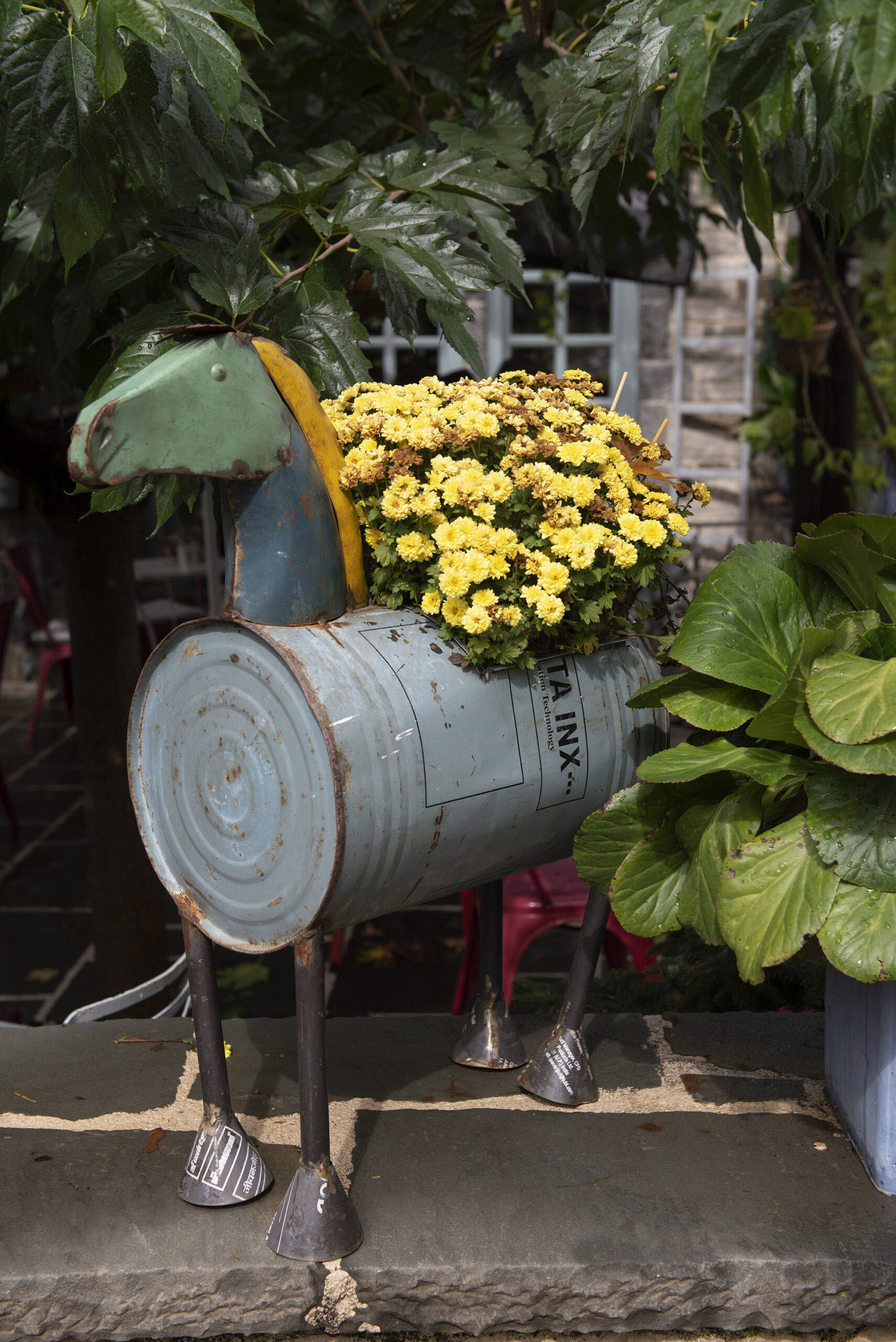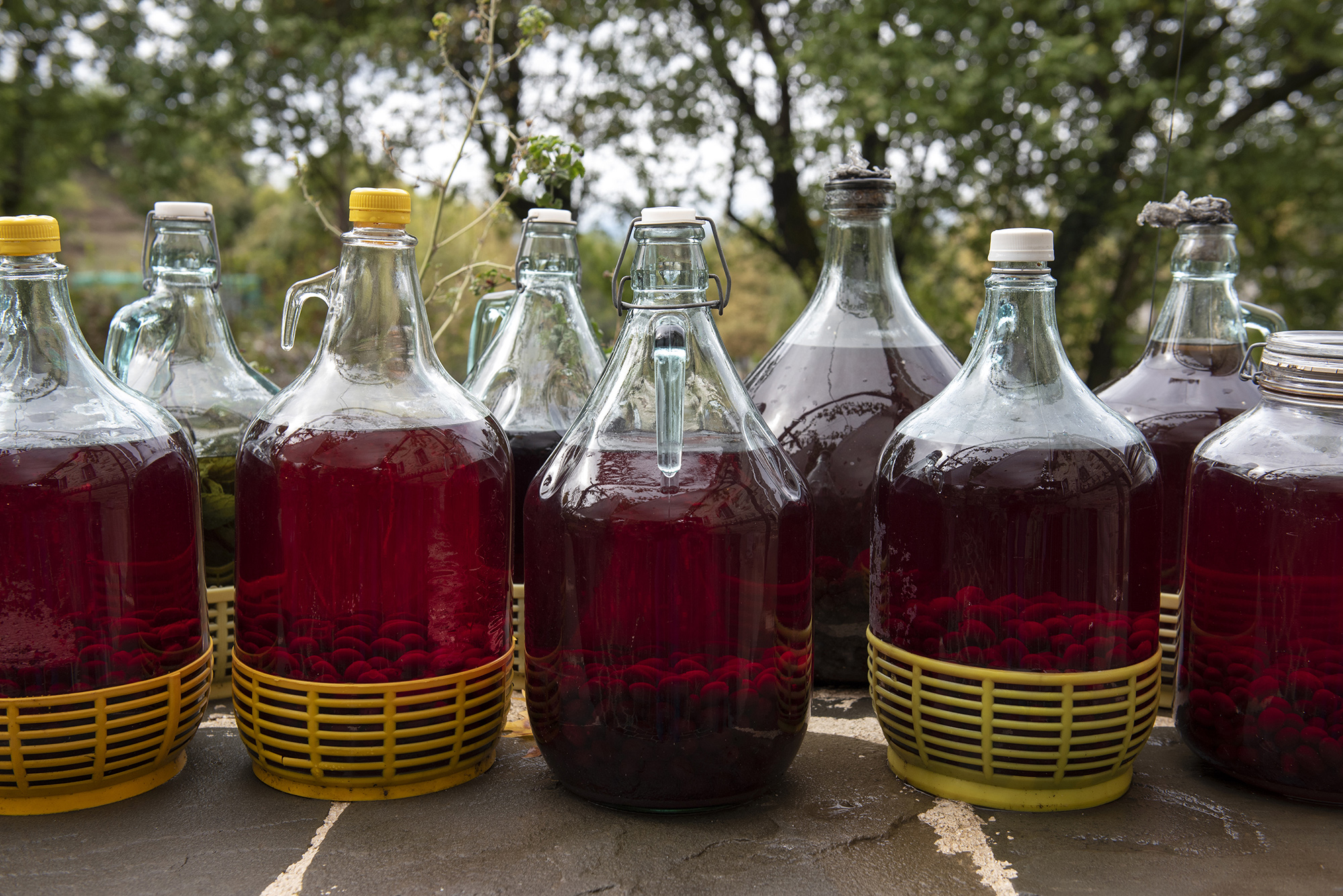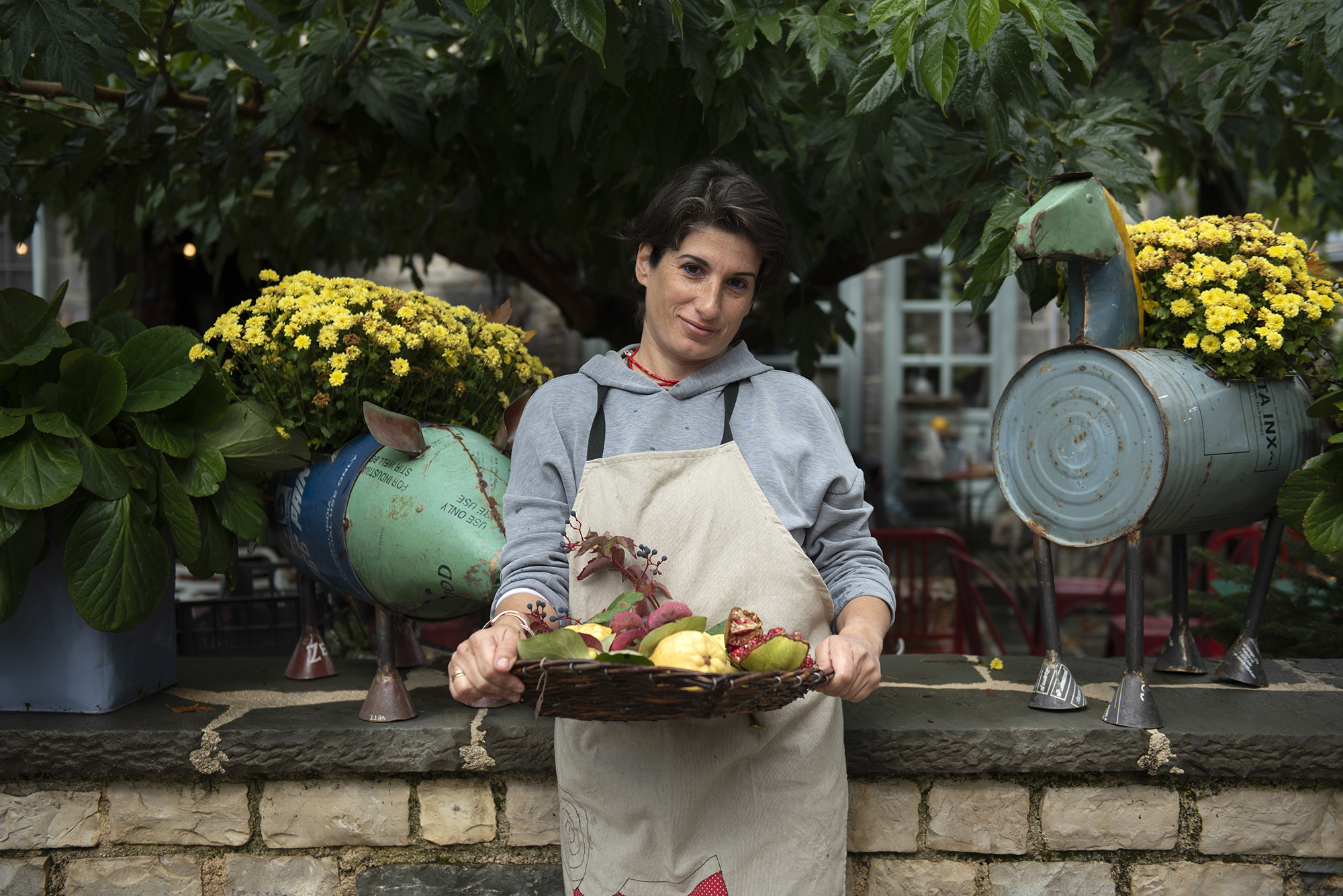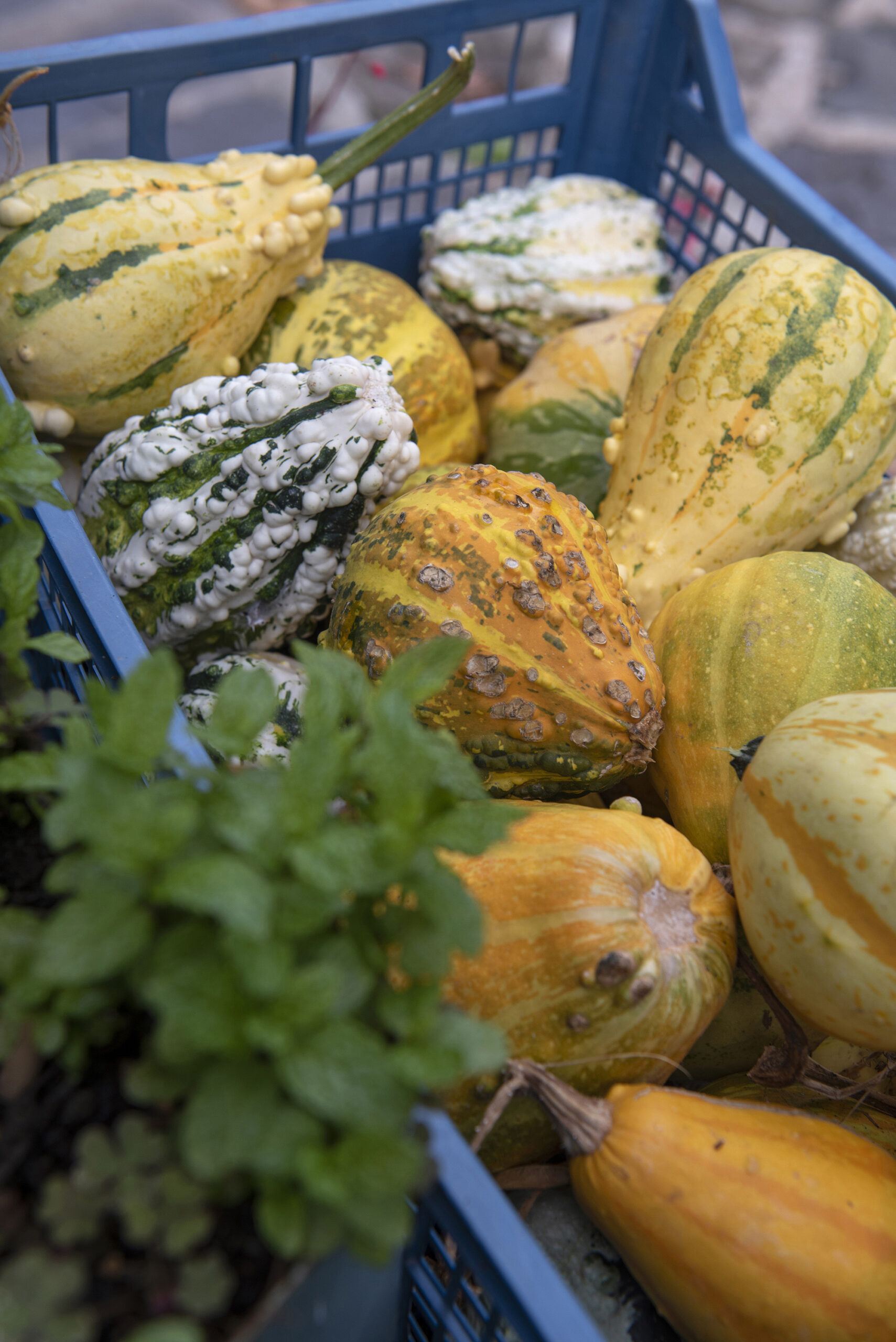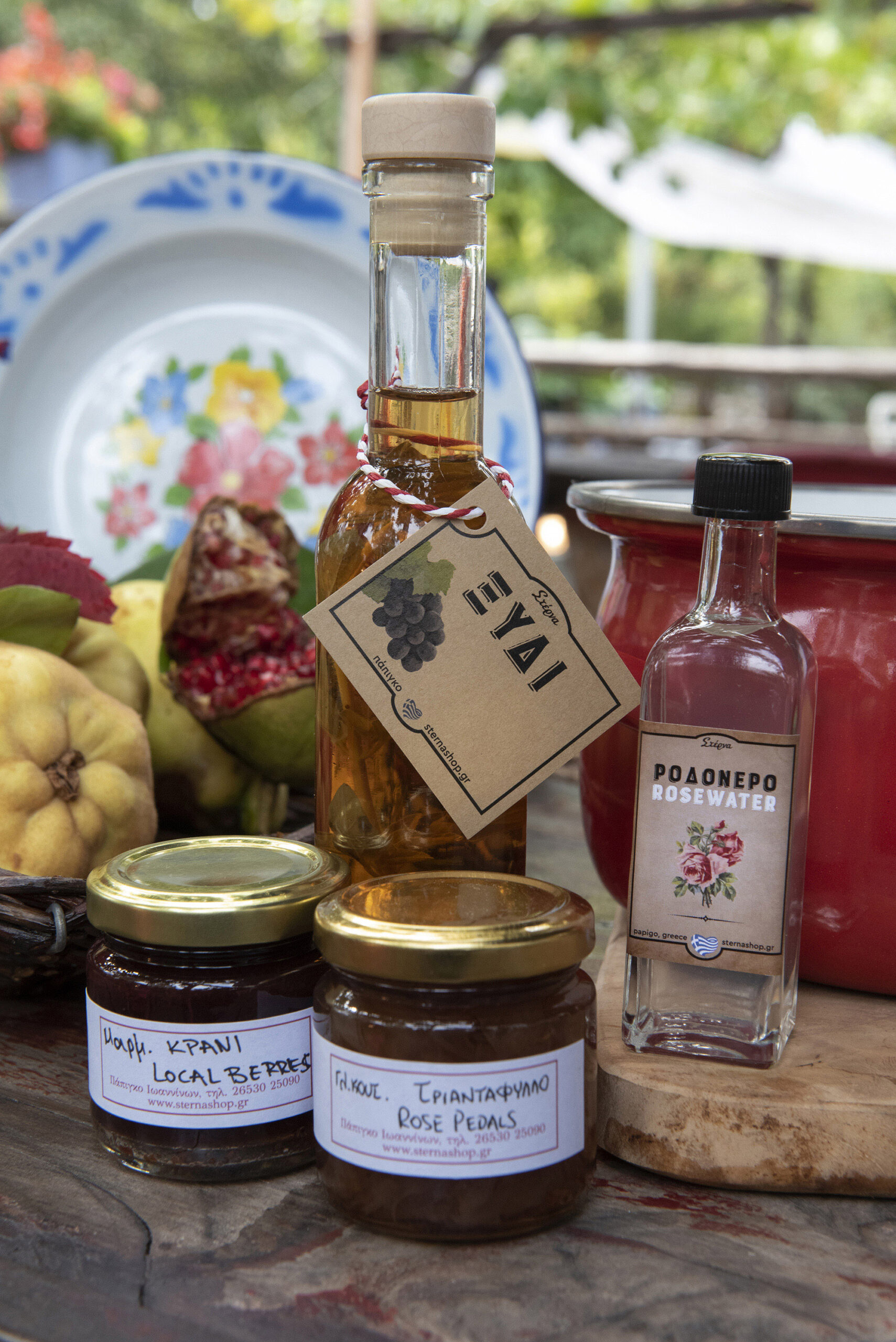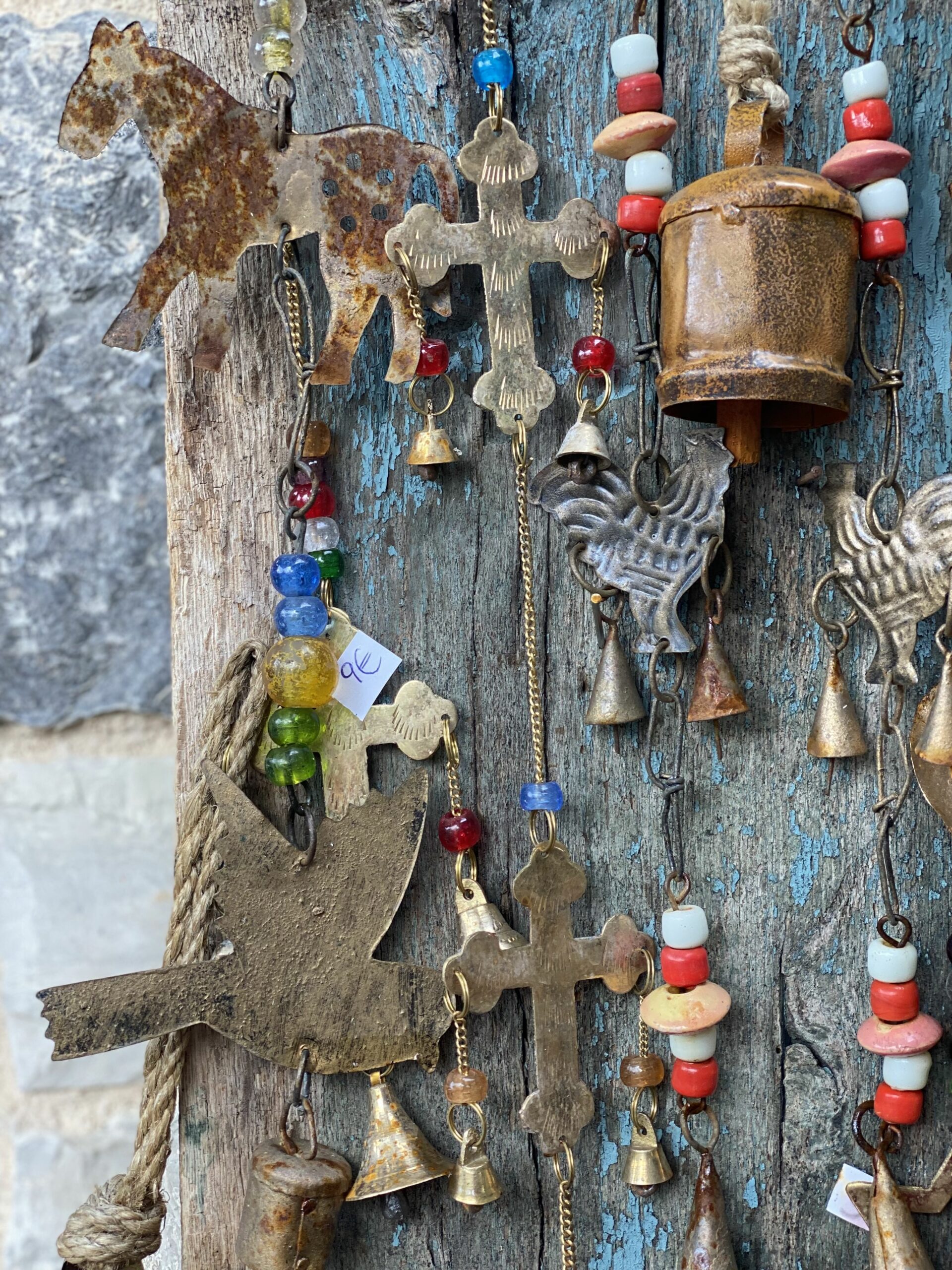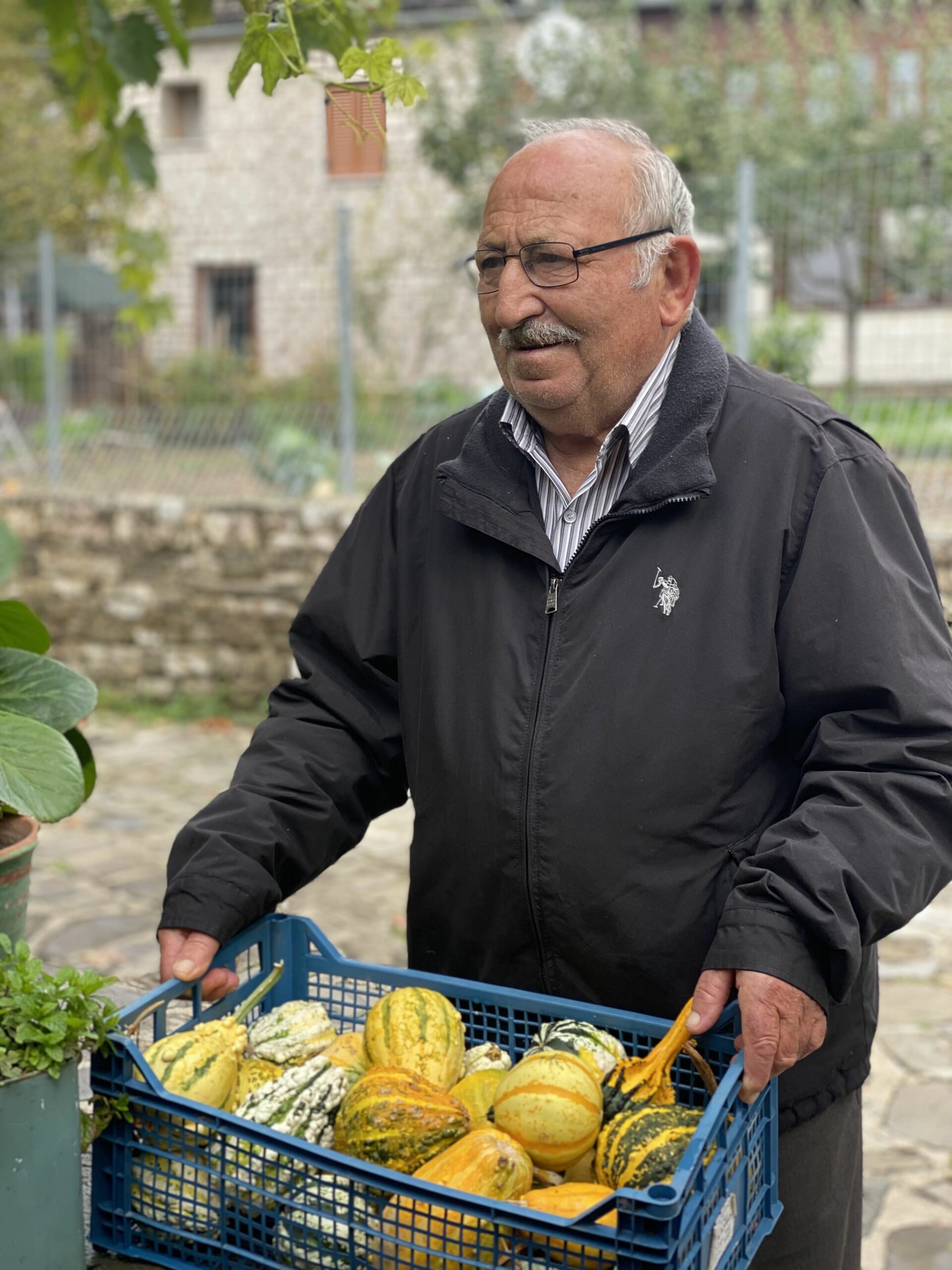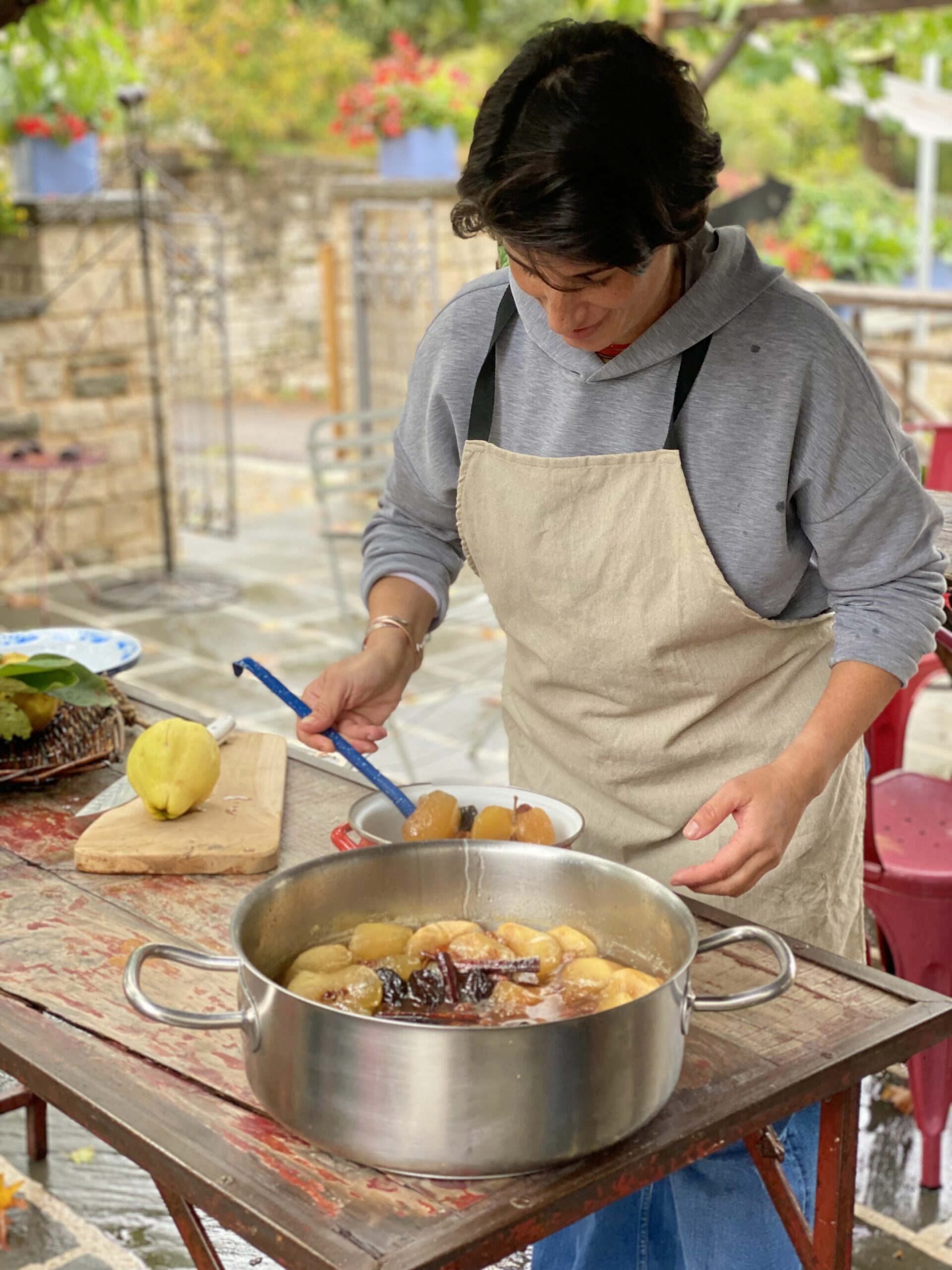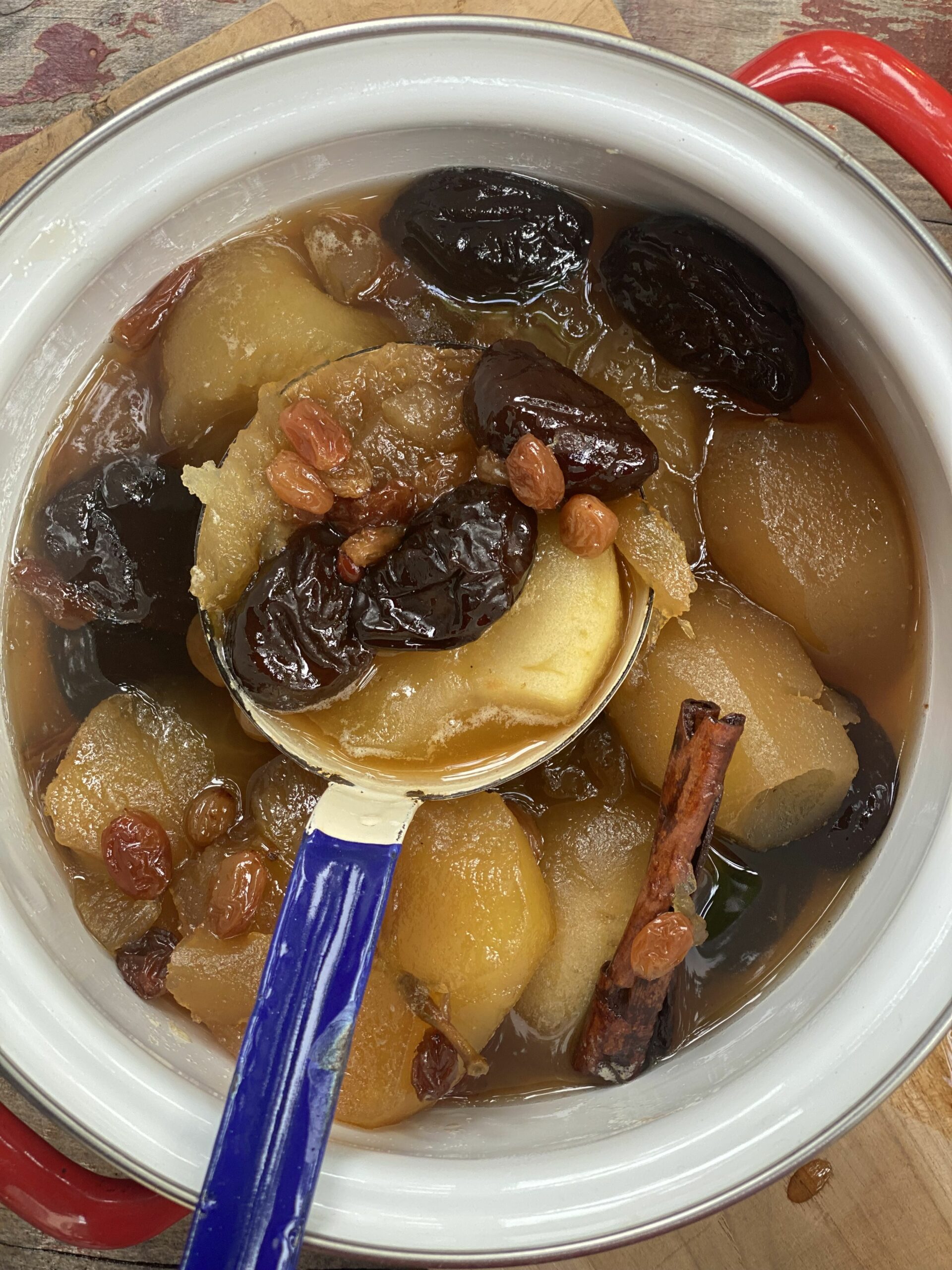We left behind us a cement bridge and the Voidomatis river in the Epirius region, northwestern Greece, and headed uphill, well worth the effort.
From the very first bend in the road, the nature, wider view and tricks of the sun and clouds prompted us to make frequent stops for photographs. From early on, it already felt like a special day lay ahead.
Reaching Megalo Papingo, we left the car by the village entrance at a spacious parking lot. Next to us, a group of people were preparing to explore the mountain. We exchanged greetings and asked about the weather. It would be rainy, but mild, overall, we were informed.
From 1325 to the present
Papingo is built on the slopes of Mount Tymfi, at an altitude as high at 960 metres. The earliest reference of the location dates back to 1325, by Byzantine emperor Andronikos II, while it is worth mentioning that during the ensuing Ottoman Empire, the village enjoyed certain privileges, the main one being a relative degree of autonomy offered to residents. The region flourished during this period, drawing major merchants from Constantinople, Romania and Russia, who moved to the area to further develop their business interests.
In the 18th century, the region experienced considerable development, leading, in 1780, four decades prior to the Greek Revolution, to the opening of a Greek school. In 1820, the year before the revolution’s outbreak, control of the area was transferred to Ali Pasha, the Ottoman Albanian ruler, who was based in Ioannina, but often visited Papingo, where, it is said, he liked to swim at Rogovo Ovires, or Kolymbithres, rock pools situated between Papingo and Mikro (Small) Papingo. The area was liberated from Ottoman rule in 1913, during the Balkan Wars. More recently, since the 1980s, the area has experienced considerable tourism growth. Papingo has become one of the best-known of the Zagori area villages, 46 in total and commonly known as the Zagorohoria, drawing a considerable number of tourists.
Papingo
We visited Sterna, a café-confectionary shop in Megalo Papingo that also sells local food products and decorative items. The shop was opened a number of years ago by Elli Papageorgiou from Kapesovo, one of the other Zagori area villages. This delightful, well-kept shop was the perfect spot from which to start our Papingo experience.
The drizzle had stopped, so we sat at the small metal tables outside, under a partially sheltered area. Every time I visit this shop, I always order a piece of apple pie along with a hot coffee. This time was no exception. Not long after we sat, Elli, the friendly proprietor, appeared. She always has something interesting to tell. On this occasion, she spoke to us about the highly anticipated rain, which, up until October, when we visited, was still sorely missing.
LEZANTES
As we chatted, she concurrently tidied things up in the yard, pointing out large bottles containing Cornelian cherry liqueur. “We will keep the liqueur in these bottles for a few more days and then transfer it into smaller bottles,” she explained, at which point her father-in-law, Christoforos Tsouramanis, turned up with a load of fruit of the season. A friendly-looking person who has obviously worked hard in his life, he also seemed to know how to enjoy some relaxation. “We will make fruit in syrup out of these,” Elli continued. I asked her for the recipe and, before I knew it, she had already begun bringing out the ingredients to the table.
Then, she was in and out of the kitchen, moving rapidly, and the fruit in syrup was ready in no time. During the process, Elli asked her mother. Mrs. Roula, about a recipe detail for confirmation. Mrs. Roula ran Sterna at its previous address, in Kapesovo, offering life to yet another delightful Zagori area square. These days, she is back and forth from Papingo, where she spends time with her grandchildren, and Kapesovo, where her other daughter, Ioanna, runs the Thoukididis guest house and a concept restaurant, primarily operating on a pre-order basis.
We took a look inside Ellli’s Sterna shop, filled with carefully and tastefully selected items. We then went down to the cellar for a look at the wines and liqueurs. The scent was delightful a little deeper inside as a woman working at a bench prepared bunches of herbal mountain tea.
We took in the aroma as we climbed up the stairs to find Elli again. She had already served us some of the fruit in syrup she had just made, still hot. The offering aroused the curiosity of other customers. They were also served some of it. Our day at Papingo had just begun.
Recipe
Fruit in syrup made with winter fruit
Ingredients
Apples, quince, plums, raisins, lemon juice, cinnamon sticks, sugar
Procedure
Peel fruit and mix with sugar, using half a kilo of sugar for every kilo of fruit. Place in a big cooking pot and pour water until the fruit is covered. Add cinnamon and lemon juice (one lemon). Stir very gently until the syrup thickens.



